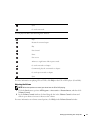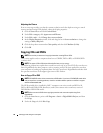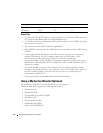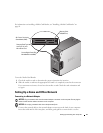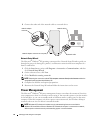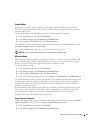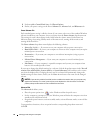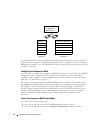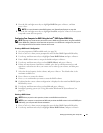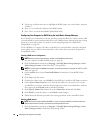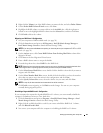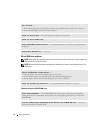
Setting Up and Using Your Computer 25
Hibernate Tab
The
Hibernate
tab allows you to enable hibernate mode. If you want to use the hibernate settings
you defined on the
Power Schemes
tab, click the
Enable hibernate support
check box on the
Hibernate
tab.
For more information on power management options:
1
Click the
Start
button and click
Help and Support
.
2
In the
Help and Support
window, click
Performance and maintenance
.
3
In the
Performance and maintenance
window, click
Conserving power on your computer
.
About RAID Configurations
This section provides an overview of the RAID configuration that you might have selected when
you purchased your computer. Of the several RAID configurations available in the computer
industry for different types of uses, Dell offers RAID level 1 on your computer. This configuration is
recommended for users that desire a higher level of data integrity.
The Intel RAID controller on your computer can only create a RAID configuration using two
physical drives. The drives should be the same size to ensure that the larger drive does not
contain unallocated (and therefore unusable) space.
NOTE: RAID levels do not represent a hierarchy. A RAID level 1 configuration is not inherently better or
worse than a RAID level 0 configuration.
Using RAID with Hard Drive Passwords
If you are using a hard-drive security option available in system setup (see page 104), you should
not use a RAID configuration. Using a RAID configuration requires that the hard drive password be
cleared to allow data access.
RAID Level 1
RAID level 1 uses a data-redundancy storage technique known as "mirroring." When data is written
to the primary drive, the data is then duplicated—or mirrored—on the other drive. A RAID level 1
configuration sacrifices high-data access rates for its data redundancy advantages.



